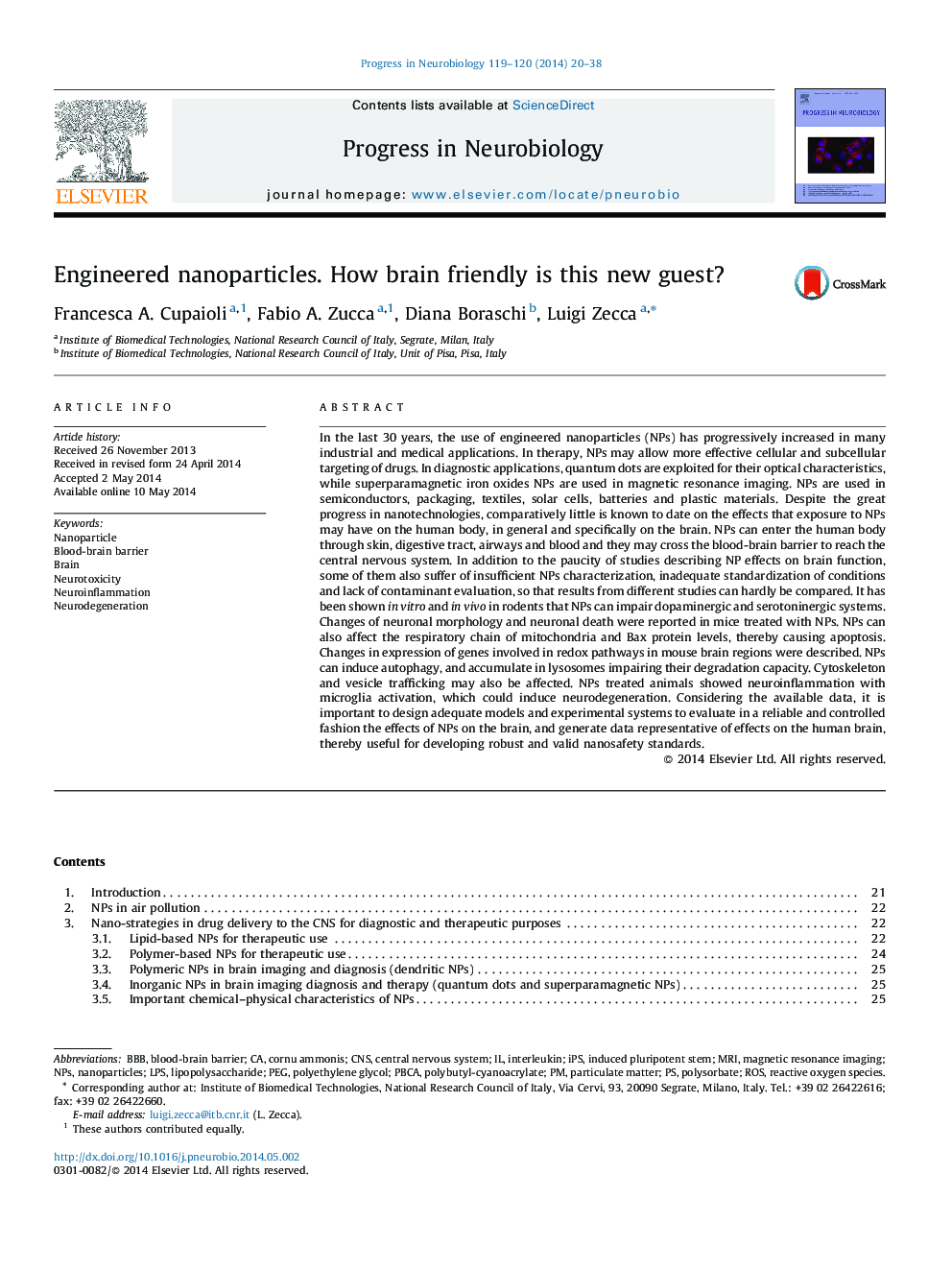| کد مقاله | کد نشریه | سال انتشار | مقاله انگلیسی | نسخه تمام متن |
|---|---|---|---|---|
| 4353305 | 1615390 | 2014 | 19 صفحه PDF | دانلود رایگان |
• This review focuses on the effects of nanoparticles on central nervous system.
• An overview of commonly used nanoparticles in drug delivery to the brain is reported.
• We discuss nanoparticles strategies to enter the brain.
• Nanoparticles effects on neuronal components and functions are described.
• We present a critical review on neurotoxicity of nanoparticles.
In the last 30 years, the use of engineered nanoparticles (NPs) has progressively increased in many industrial and medical applications. In therapy, NPs may allow more effective cellular and subcellular targeting of drugs. In diagnostic applications, quantum dots are exploited for their optical characteristics, while superparamagnetic iron oxides NPs are used in magnetic resonance imaging. NPs are used in semiconductors, packaging, textiles, solar cells, batteries and plastic materials. Despite the great progress in nanotechnologies, comparatively little is known to date on the effects that exposure to NPs may have on the human body, in general and specifically on the brain. NPs can enter the human body through skin, digestive tract, airways and blood and they may cross the blood-brain barrier to reach the central nervous system. In addition to the paucity of studies describing NP effects on brain function, some of them also suffer of insufficient NPs characterization, inadequate standardization of conditions and lack of contaminant evaluation, so that results from different studies can hardly be compared. It has been shown in vitro and in vivo in rodents that NPs can impair dopaminergic and serotoninergic systems. Changes of neuronal morphology and neuronal death were reported in mice treated with NPs. NPs can also affect the respiratory chain of mitochondria and Bax protein levels, thereby causing apoptosis. Changes in expression of genes involved in redox pathways in mouse brain regions were described. NPs can induce autophagy, and accumulate in lysosomes impairing their degradation capacity. Cytoskeleton and vesicle trafficking may also be affected. NPs treated animals showed neuroinflammation with microglia activation, which could induce neurodegeneration. Considering the available data, it is important to design adequate models and experimental systems to evaluate in a reliable and controlled fashion the effects of NPs on the brain, and generate data representative of effects on the human brain, thereby useful for developing robust and valid nanosafety standards.
Journal: Progress in Neurobiology - Volumes 119–120, August–September 2014, Pages 20–38
